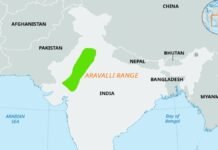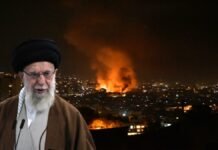
Key Points
- Israel launched “Operation Rising Lion,” striking over 100 Iranian nuclear and military sites, killing top Iranian commanders and scientists.
- In retaliation, Iran fired more than 100 explosive drones possibly up to 200 toward Israel, aiming to overwhelm Israeli air defenses.
- Supreme Leader Ali Khamenei vowed a “bitter and painful fate” for Israel, warning of further escalation.
- Israel’s Home Front Command issued emergency alerts; air raid sirens sounded across the country as air defenses intercepted incoming drones.
- The international community, including the UN, called for restraint as fears of a broader regional conflict grew.
Tehran: le East is on edge after a dramatic escalation between Israel and Iran. On Friday morning, Israel launched a sweeping aerial campaign codenamed Operation Rising Lion deploying 200 fighter jets to strike over 100 targets across Iran, including nuclear facilities, missile factories, and the homes of senior military officials. The strikes killed several top Iranian leaders, including IRGC Commander Hossein Salami and Armed Forces Chief of Staff Mohammad Bagheri, as well as prominent nuclear scientists.
Iran’s Swift and Massive Response
Within hours, Iran responded forcefully. Supreme Leader Ayatollah Ali Khamenei, vowing “blood for blood,” ordered the launch of more than 100 drones some reports say up to 200 toward Israel. The drones, including advanced Shahed-129 and Shahed-136 models, were launched from Iran and Iraq, aiming to saturate Israeli air defenses and inflict both physical and psychological damage.
Israeli Defense Ministry officials confirmed the attack, with air raid sirens blaring across the country and the Home Front Command urging citizens to stay close to shelters. The IDF said its air defense systems were intercepting the drones, and that the threat could last for several hours as more drones might be en route.
Operation Rising Lion: The Trigger
Israel’s operation was described as its largest attack on Iran since the Iran-Iraq War, targeting key nuclear enrichment sites like Natanz and Khondab, missile production facilities, and command centers in Tehran. The strikes also hit residential areas, resulting in civilian casualties, including children. Israeli Prime Minister Benjamin Netanyahu stated the attacks would continue “for as many days as it takes to remove this threat”.
Regional and Global Fallout
The escalation has drawn international concern. The UN and several countries called for restraint, warning that further conflict could destabilize the entire region. Neighboring states like Jordan and Iraq closed their airspace, and global markets reacted with volatility amid fears of a broader war.
What’s Next?
With Iran’s drone barrage still underway and Israel’s military on high alert, the possibility of further missile attacks looms large. Both sides have signaled readiness for continued confrontation, raising the specter of a wider regional conflict.
The cycle of attack and retaliation between Israel and Iran has reached a new and dangerous level, with both nations suffering heavy losses and the threat of escalation growing by the hour. As the world watches, the coming days will be critical for the future of Middle Eastern stability.



















































